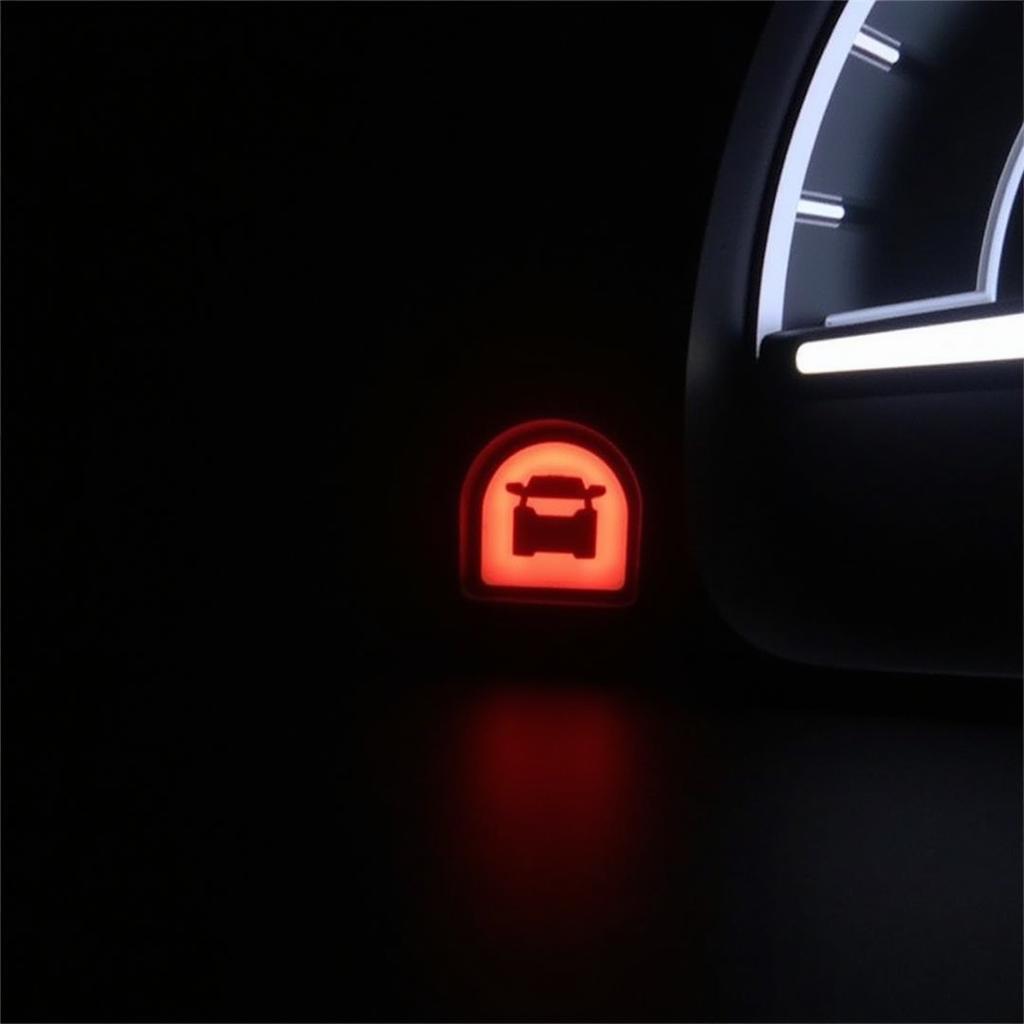If you’re seeing a “brake warning light” illuminating your 2011 Legacy GT’s dashboard, it’s a clear sign that your braking system needs attention. While this warning can indicate several issues, it often points to worn brake pads. Ignoring this warning can compromise your safety and lead to costly repairs. This comprehensive guide will walk you through understanding the brake warning light on your 2011 Legacy GT and what steps to take next.
Understanding Your 2011 Legacy GT’s Brake Warning Light
The brake warning light is part of your car’s essential safety system. It’s designed to alert you to potential issues within the braking system, giving you time to address them before they escalate. Here’s what your brake warning light could be signaling:
- Worn Brake Pads: The most common culprit. Most vehicles have sensors in the brake pads that trigger the light when they wear thin, indicating a need for replacement.
- Low Brake Fluid: Brake fluid is the lifeblood of your braking system. A leak in the system can lead to a drop in fluid level, compromising your ability to brake effectively.
- Faulty ABS System: If your Anti-lock Braking System (ABS) encounters a problem, the warning light might illuminate. This usually requires a professional diagnosis.
- Other Issues: Less common but still possible are issues with the brake lines, master cylinder, or parking brake.
 2011 Legacy GT Brake Warning Light
2011 Legacy GT Brake Warning Light
What To Do When Your Brake Warning Light Comes On
- Don’t Panic: While a brake warning light is serious, it doesn’t always mean you’re in immediate danger. Pull over to a safe location as soon as possible to assess the situation.
- Check Your Brake Fluid: Locate your brake fluid reservoir (refer to your owner’s manual if needed) and check the fluid level. If it’s below the “minimum” line, adding fluid won’t solve the issue. It’s crucial to have a mechanic inspect for leaks.
- Inspect Your Brakes: If you’re comfortable doing so, take a look at your brake pads. Look for signs of excessive wear or if they appear thinner than a dime.
- Listen for Noises: Unusual sounds while braking, such as grinding or squealing, often indicate worn brake pads.
- Seek Professional Help: If you’re unsure about any aspect of your brake system’s condition, it’s always best to err on the side of caution. Take your Legacy GT to a trusted mechanic or dealership for a thorough inspection.
Can I Drive My 2011 Legacy GT with the Brake Light On?
The short answer is: It’s not recommended. Driving with a lit brake warning light can be incredibly risky. It signifies a potential problem with your braking system that could lead to reduced braking power or even complete brake failure.
“Ignoring a brake warning light is like ignoring a flashing ‘check engine’ light – it’s just not worth the risk,” says master mechanic, John Riley. “The longer you wait to address the issue, the more expensive and potentially dangerous it can become.”
Replacing the Brakes on a 2011 Legacy GT: What You Should Know
Replacing brake pads on a 2011 Legacy GT is a job many car owners with some mechanical skills can tackle themselves. However, it’s essential to have the correct tools, knowledge, and a good understanding of car mechanics.
If you’re not comfortable with DIY repairs, it’s always best to leave brake work to the professionals.
Maintaining Your 2011 Legacy GT’s Brakes: Essential Tips
- Regular Inspections: Have your brakes inspected at least once a year or every 12,000 miles, or as recommended in your owner’s manual.
- Brake Fluid Flushes: Subaru recommends a brake fluid flush every 30,000 miles or 24 months to maintain optimal braking performance.
- Driving Habits: Aggressive driving with a lot of hard braking can wear your brake pads down more quickly. Practice smooth and anticipatory driving to extend the life of your brakes.
Conclusion
Addressing a brake warning light on your 2011 Legacy GT is not something to postpone. By understanding the potential causes, taking immediate action, and prioritizing regular maintenance, you can ensure the safety and longevity of your vehicle’s braking system. Remember, when it comes to brakes, proactive care is always better than a reactive response.
